It’s not easy to throw a good party, but it’s even harder to keep one going. Justin Kelly explores how a Rust Belt city is rebuilding its club scene with a focus on sustainability.
This past December, Output, New York City’s largest house and techno club, announced it would close on January 1st, 2019 after six years of operation.
“This sudden turn of events may seem shocking to many, but for those of us watching from the inside, we have seen the writing on the wall for some time,” wrote the founders in a Facebook post. “A confluence of factors contributed to the club’s misfortune; rapidly shifting social trends, unfavorable market conditions and weakening financial outlooks coincided with the simultaneous emergence of multiple existential challenges unique to the club’s circumstances.”
The announcement was a bleak reminder that club and dance music culture have often struggled to find a sustainable home in US cities. But at the exact same time Output was marking 6 years with its final party, a few hundred dancers in Pittsburgh, Pennsylvania were celebrating the 6th anniversary of Hot Mass, the weekly party that’s been making waves since 2012 for its quality bookings and an intimate, late-night atmosphere.
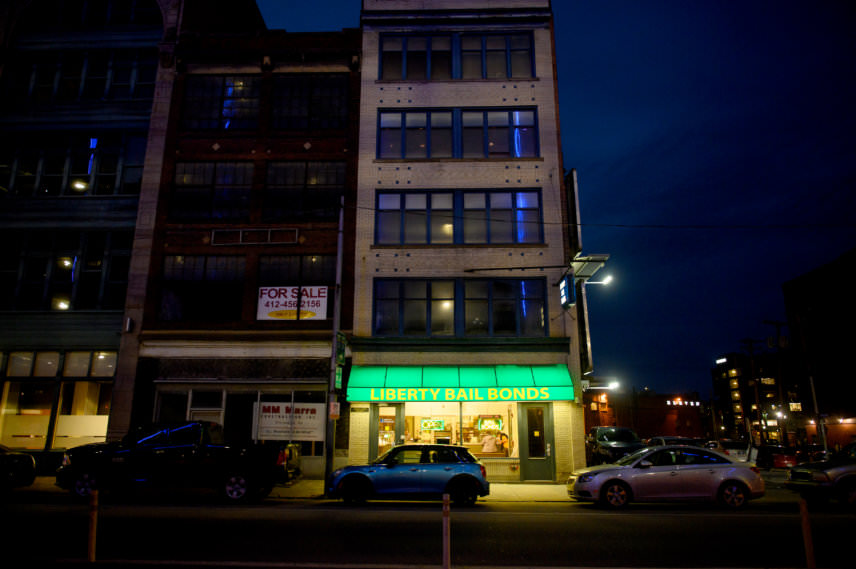
With a population of just over 300,000, it’s not obvious that Pittsburgh, a Rust Belt city on the eastern edge of the American Midwest, would have an underground dance music scene. Aside from the less-than-supportive national backdrop, Pennsylvania has relatively strict liquor and nightlife laws, and Pittsburgh has seen several variations of dance music culture rise and fall — a bustling network of clubs declined in the late 80s, and a huge rave scene collapsed in the early 2000s.
But over the past decade, dedicated folks in Pittsburgh have been setting the standard on how to build a quality dance music ecosystem outside of the major metropolitan cities like New York or Los Angeles.
Two institutions in particular — Hot Mass and the digital music and art festival, VIA — have drawn international artists and attention to the Steel City, cultivating an audience and stimulating the scene around them. And because the folks behind those institutions know that a good dance music scene is not a given in Pittsburgh, they’re developing their own strategies on how to build something that will last.
Back to The Future
Promoter and DJ Geoff Maddock began going to Pittsburgh raves in 1991, when he was 15 years old. The raucous parties would take place anywhere that would allow it — warehouses, empty ice rinks, even in barns or open fields — and they drew audiences from all around the region.
In the early to mid-’90s, when crowds were in the hundreds, Maddock would go to raves for their range of musical offerings: house, techno, hardcore, jungle, drum and bass, industrial, and more, often all in the same event. Those raves, he said, ignited the same fascination with electronic music that drives him to throw parties and DJ today.
The cops can always try, but they’re never going to take away the movement. It’s too big.
But by 1998, crowd numbers reached into the thousands, and people were going to raves for many different reasons. It seemed to Maddock that music was no longer the priority.
“The parties were getting huge, and it was like an open drug marketplace after a certain point,” Maddock said. “I knew that was gonna get us shut down. You should be smart about what you’re doing if you’re already going to do it, but it seemed like every teenager heard they could find drugs at raves, and I was like, ‘I don’t want to be a promoter and be responsible for this.’”
By the turn of the millenium, massive raves were a weekly occasion in Pittsburgh, drawing huge audiences every week for parties that featured popular local talent or international headliners like Richie Hawtin and Adam Beyer. At that size, the events began to draw attention from media and police — but the ravers weren’t worried.
“The cops can always try,” said an anonymous source referred to as “Z” in a 2000 Pittsburgh Post Gazette article. “But they’re never going to take away the movement. It’s too big.”
Z was wrong. In 2001, police began ordering venues to stop hosting raves, and by 2003, drug busts and new legislation had all but ended the parties in Pittsburgh. To the dismay of many, rave culture had grown so big in Pittsburgh that its death left the city with little to no dance music.
“When the rave scene died here, it took everything.” said Pittsburgh techno-guru Shawn Rudiman. “And it died hard and fast, like it went off a cliff.”
Rudiman, a producer and live-set wizard with over 30 releases on labels like Detroit Techno Militia and Daniel Bell’s 7th City Records, has had a long and rich tenure as one of Pittsburgh’s finest electronic musicians. He moved to Pittsburgh in 1998 and has lived there ever since, and his career has been a sort of barometer for the dance music scene in the city, mimicking its peaks and valleys.
The mid-2000s — described by many as “the dark ages” — were bleak. After a rave scene that provided a wealth of gigs, Rudiman said, there were virtually no parties, and he didn’t play a live set for several years.
The Shadow Lounge
It was during those years that Aaron Clark and Lauren Goshinski — two figures instrumental to Pittsburgh’s current cultural offerings — moved to the city. Clark, a DJ and promoter who co-founded Hot Mass, arrived for university in 2003, just in time to miss the rave scene.
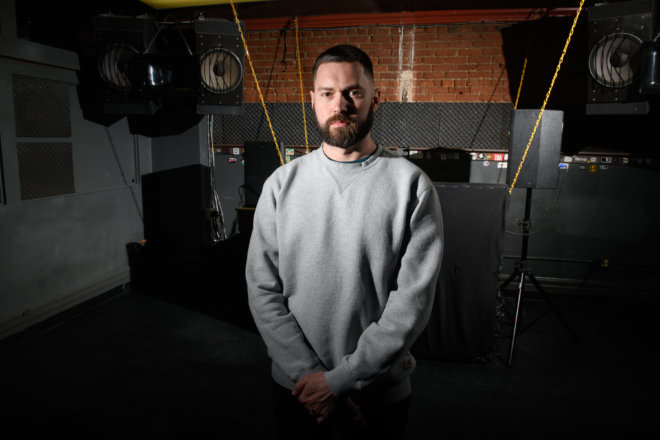
“It seemed like the dark ages started in 2001 or 2002. So I rolled in and was like, ‘Hey guys, where’s the party?’” Clark said. “And everyone said, ‘Uh, nowhere. It’s over.’”
Around the same time, Goshinski returned to Pittsburgh from a year on student exchange in London, where she was a regular at fabric and other clubs in the burgeoning London scene. On return to the US, she was similarly disappointed. “For me, there was really almost nothing that I resonated with,” she said.
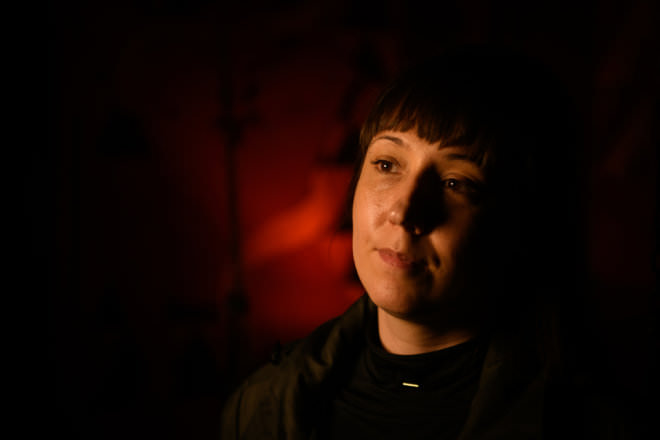
There was one spot, however. Goshinski began attending shows at the Shadow Lounge, a coffee shop and music venue that could have after-hours parties because they didn’t have a liquor license. According to co-owner Tim Guthrie, the Shadow Lounge was a nexus for local R&B and hip hop, but took pride in booking a wide range of genres and artists.
“There was always so much stuff going on,” Guthrie said. “You could have some folk music in the evening, then a party at night, and then a freestyle cypher could pop off at any time right in front.”
The Shadow Lounge’s events were relatively small, with a capacity of around 200, and the focus was always on the music and the community, according to Guthrie. Because house and techno were just one part of that community, the Shadow Lounge remained unaffected when the rave scene dried up, leaving it as one of the only places in the city where people could find dance music.
While Clark and Goshinski didn’t know each other yet, they both frequented the Shadow Lounge during those years. But the Lounge was only one spot, and it was small.
Cultural Engineering
Throughout the 2000s, they both took their first steps into the world of cultural engineering. Goshinski began by putting on community-minded shows at the Shadow Lounge with a focus on combining artists from different disciplines. Separately, Clark started throwing “dumb little parties” in local bars, eventually graduating to hosting electronic music nights in more mainstream clubs.
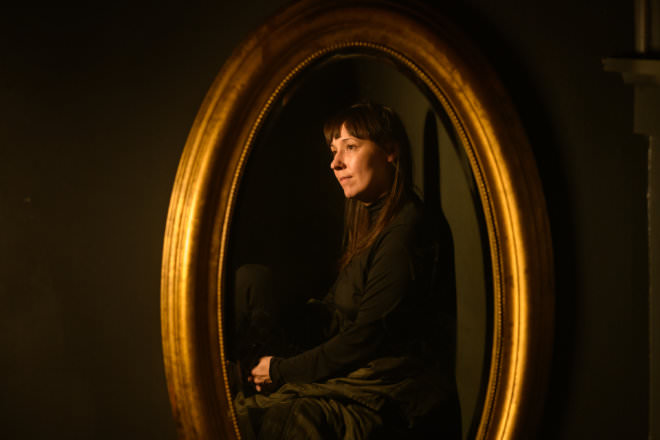
Along the way, they were learning how to produce events, but they were also thinking about strategies for creating sustainable, culturally important spaces.
One of those strategies was a focus on quality over quantity. By the late ‘00s, Clark had joined a crew called Humanaut, and they were drawing several hundred people a night to their parties in nightclubs that had dress codes and bottle service. Clark was less than satisfied.
“In Pittsburgh, the clubs just aren’t built for what we’re looking to do,” Clark recalled. “The soundsystem is bad, the owners have an opinion on everything, the lighting is wrong, the layout is bad, and it doesn’t make for a warm environment for music or dancing.”
So, they made a switch. Humanaut moved out of the clubs and into Belvedere’s Ultra Dive, a bar that looks and feels as its title would suggest. Clark estimated that their attendance dropped from over 600 to under 200 people.
“We just wanted a dark dump where we could bring in the biggest sound system we could find and put all of our money into the DJ we really wanted,’” he said. “And over time, that brought in a whole new crowd that was music driven. It got nerdier, but it also got sexier, and smellier, and smokey-er. We kind of found our groove.”
Goshinski, who had recently completed a degree in Art History at the University of Pittsburgh, was attending and occasionally DJing those parties. She held a similar disdain for the high-octane, high-attendance events that were dominating the local electronic music scene.
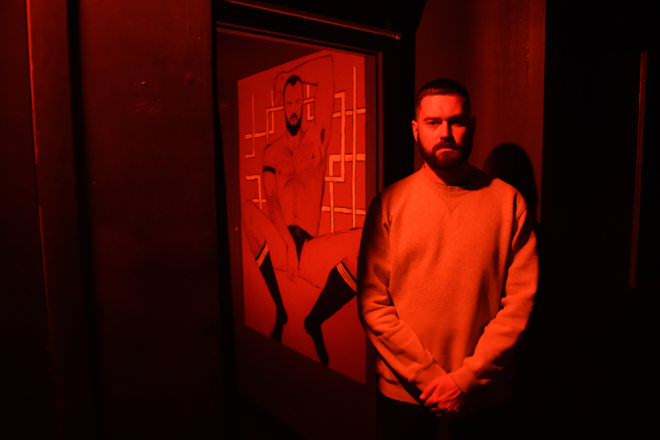
“I was really frustrated by shitty club visuals and what EDM had done to electronic music in the States,” she said. “But there was this whole other trajectory of how people had been creating audio-visual experiences, whether it was in galleries, clubs or festivals in other countries and even maybe in some parts of the States.”
Goshinski began small, first with the events at Shadow Lounge and then on to larger one-off events, thoughtfully pairing artists from the audio and visual, always tinged with the flavor of club culture. That interdisciplinary ethos would eventually become VIA, Pittsburgh’s first audio-visual music festival.
From 2010 to 2017, VIA brought in almost 1,000 different artists from diverse locations, musical genres, and artistic practices, earning a reputation for its adventurous bookings in distinctly-Pittsburgh settings. Highlight shows featured the likes of Four Tet with artistic duo Abstract Birds, or KiNK and Hunee with artist Theodore Darst.
The interdisciplinary strategy had several benefits — putting two artists from different artistic networks on the same bill had the potential to tap into two audience markets which made for a richer overall experience. Goshinski, though, was most interested in making a ruckus.
“The idea is to literally create more noise,” she said. “Have people cross-pollinating, having them doing it in a public way where they’re not just cross-pollinating in Pittsburgh but also bringing in people from outside so they’re establishing this place as an international city for that kind of activity.”
It seemed like the dark ages started in 2001 or 2002. So I rolled in and was like, ‘Hey guys, where’s the party?’ and everyone said, ‘Uh, nowhere. It’s over.’
Unifying Audiences
While Goshinski was building VIA, Clark was putting together what would eventually become Hot Mass. At the time, there were no weekly underground house and techno focused events in Pittsburgh. There were several reasons for that — the scene was rebuilding, good venues were scarce, and organizing a weekly party was too much work in the Pittsburgh music economy where everyone had to keep a day job to pay the bills.
In the early ‘10s, Humanaut was going strong with its new and smaller audience, and Clark was also helping to organize VIA related after parties in various venues around the city, one of which was the second floor of a gay bathhouse on the edge of Pittsburgh’s downtown.
The space was right — it was a dark, small dance floor that got hot and humid when full, and its location in a bath house gave it a wild, unpredictable energy — but there was still the issue of a weekly party requiring more work than anyone could shoulder.
The solution that Clark engineered was to give each weekend to a different crew that was already throwing parties around the city. This way, the workload was distributed across four or five groups, while the unified name and location allowed for the crews to share their audiences and build a larger following.
It worked. Almost every Sunday morning since 2012, Hot Mass has hosted standout underground talent and big-room headliners for a feverishly dedicated crowd of locals and travelers alike, usually with a unique mixture of energy, quality, and intimacy.
When asked why Hot Mass is unique or successful to the degree that it is, Clark cites a number of possibilities, from the temperature of the dance floor to the eclectic mix of clientele. But most likely, he thinks, it’s an uncompromising focus on the quality of the music.
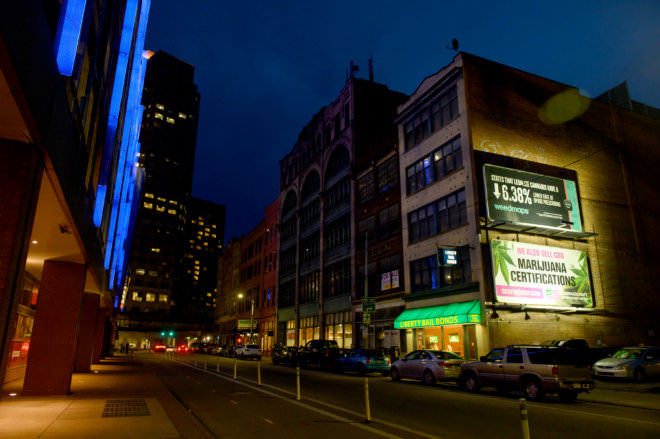
“There’s not a single person that we bring that I don’t have total faith in,” he said. “We’re really careful about it. A lot of our bookings will go out there and play weird shit or take people on a journey, but they know how to do it at the right moment. And we’re lucky to have a musically educated crowd, so they’ll go with it.”
Perhaps most importantly, Clark and Goshinski’s work hasn’t happened in a vacuum. In Pittsburgh, a number of well-attended monthlies have popped up in recent years, the local Is/Was record label earned Label of the Month from Resident Advisor this past March, and 2018 saw the aforementioned Shawn Rudiman play live sets across the US and at Griessmuehle, Tresor, and Dekmantel. As a result, Rudiman no longer needs the day job as a woodworker that he’s held down for well over a decade.
In terms of dance music, Pittsburgh looks very differently than it did a decade ago, and the not-entirely-separable Hot Mass and VIA crews seem to be at the center of much of that growth.
But, not too long ago, there was a different period of growth in Pittsburgh’s electronic music, followed by a rapid decline into an era that is now looked back on as “the dark ages.” What’s to say that Pittsburgh’s current dance music scene won’t meet the same fate as the raves?
Rudiman, one of the few members of Pittsburgh’s current electronic music community that was around for the rave days, doesn’t think it will.
“It’s absolutely a more sustainable ecosystem now,” he said. “With any ecosystem, there’s a necessary balance that you’re constantly trying to find. And that’s one thing the rave scene did not have, was any balance.”
Through collaborative thinking, a focus on quality, interdisciplinary models, and international connections, the dedicated folks behind Pittsburgh’s dance music renaissance do seem to have struck a balance, and it sounds a lot more like a variation on the model of the Shadow Lounge than the rave scene.
Going forward, things are looking good for Hot Mass. Later this month, the club will host a day party at Movement in Detroit for the second year in a row, and Honcho (the Hot Mass crew self-described as “Pittsburgh’s dance music rager for homos and friends”) will hold the fifth edition of its summer festival in August. Clark also hinted that Hot Mass might be ready to expand to another location.
Of course, the situation’s not perfect. VIA went on hiatus in 2018 when Goshinski suffered a major leg injury after a DJ set in Berlin, and now, the curator is unsure about the financial viability of a revival.
And like most people behind Pittsburgh’s dance music scene, Goshinski’s local work doesn’t generate enough money to cover living expenses. Now, she’s spending much of her time in Vancouver working as a co-director for the New Forms Festival.
There are still plenty of challenges, but if there’s one thing that Clark, Goshinksi, and their many collaborators have shown in Pittsburgh, it’s how homegrown, internationally-connected, and sustainability-focused cultural engineering can overcome complex roadblocks.
Orignal Photography by Justin Merriman
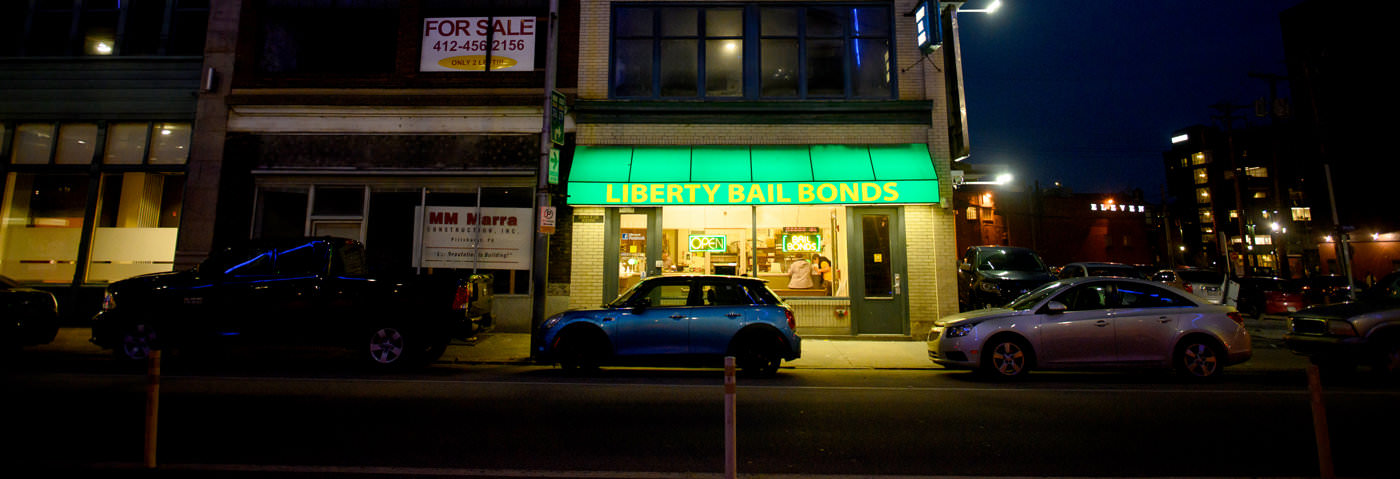
01.06 AM
This is only a 1/10 of the reality and a lot of gratuitous self promotion. You should talk to the actual people that started Hot Mass which began as Deeper. Please be careful that this story is not trying to erase history.